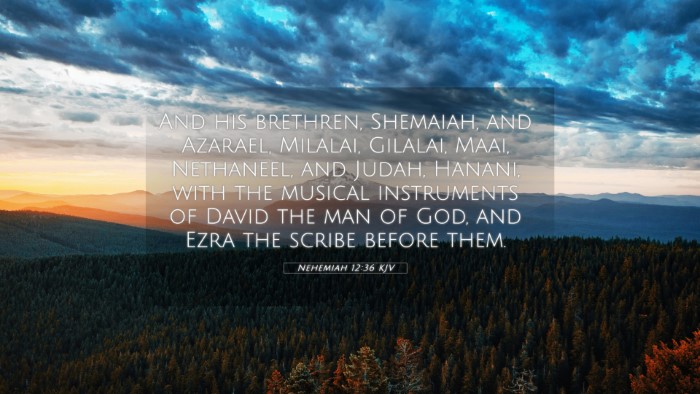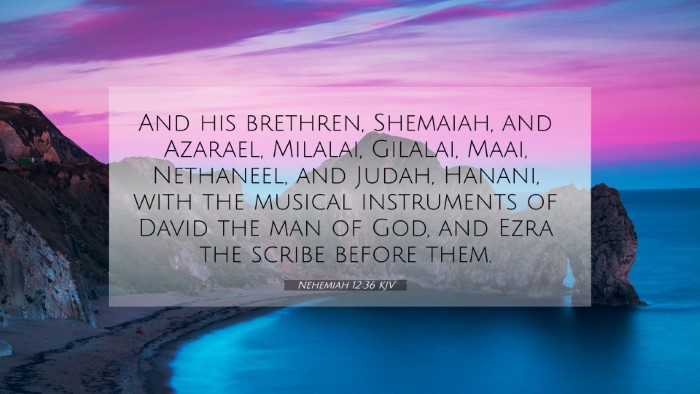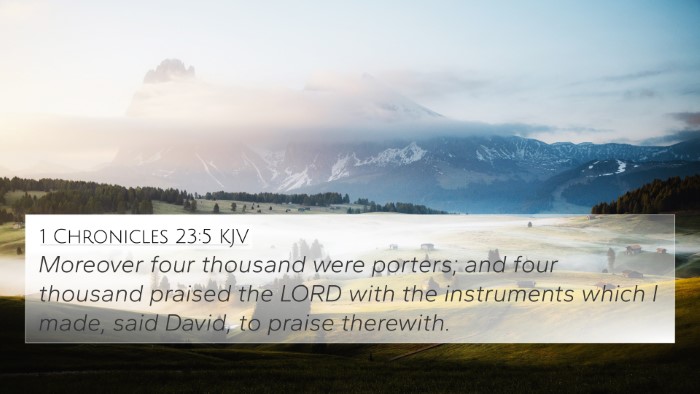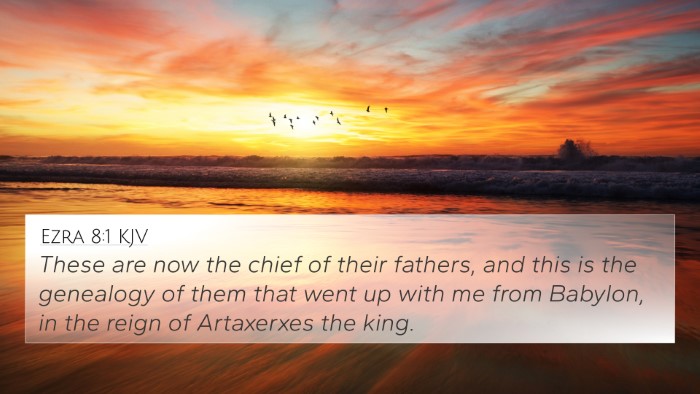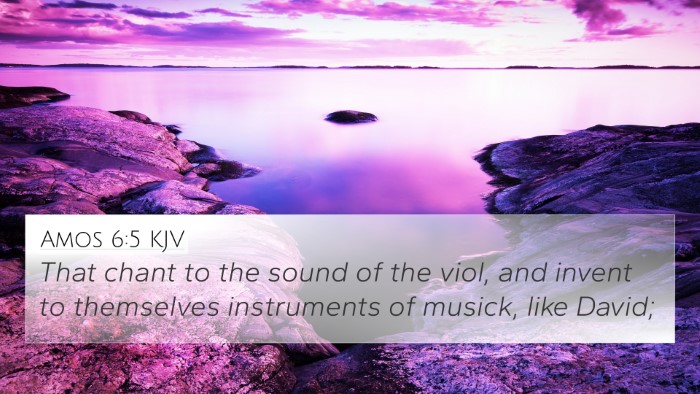Understanding Nehemiah 12:36
Bible Verse: Nehemiah 12:36 - "And his brethren, Shemaiah and Azariah, Melalai, Gilalai, Maai, Nethanel, and Judah, Hanani, with the musical instruments of David the man of God, and Ezra the scribe before them."
Overview and Context
The context of Nehemiah 12 describes the dedication of the wall of Jerusalem and highlights the participation of the Levites and priests in the celebration. This is a significant moment in Jewish history as it symbolizes restoration and revival after the Babylonian exile.
Interpretation Insights
- Matthew Henry's Commentary: Matthew Henry emphasizes the importance of the musical instruments mentioned, indicating their role in the worship and praise of God. The presence of these musicians signifies the revival of the worship practices established by David, which were integral to the Jewish identity and community.
- Albert Barnes' Commentary: Albert Barnes notes the list of names signifies the organization and participation of the clergy in the spiritual life of the nation. This reflects the depth of communal commitment to re-establish their heritage and religious practices following their return from exile.
- Adam Clarke's Commentary: Adam Clarke highlights the significance of Ezra's presence among the musicians. As a scribe and teacher of the law, Ezra represents the importance of scriptural adherence and teaching within the community as they seek to restore their national and spiritual identity.
Thematic Connections
This verse illustrates several themes, including:
- Worship and Music: The emphasis on musical instruments indicates a deep-rooted tradition of worship through music in ancient Israel.
- Leadership and Community: The names listed represent various leaders within the community who are committed to the restoration of Jerusalem.
- Spiritual Revival: The re-establishment of worship practices reflects a broader theme of spiritual renewal following a period of desolation.
Cross-References of Nehemiah 12:36
This verse connects with several other Bible verses that enhance its meaning and provide deeper insights into its themes:
- 1 Chronicles 15:16: Discusses the appointment of musicians in worship.
- 2 Chronicles 5:13: Highlights the significance of music during the dedication of the temple.
- Psalm 150:3-5: Encourages praise with musical instruments, linking back to their use in worship.
- Ezra 3:10: Describes the rebuilding of the temple and the role of priests and Levites in worship.
- Nehemiah 10:39: Involves the community's commitment to temple service and worship.
- Zephaniah 3:17: Talks about God singing over His people, emphasizing the importance of joy in worship.
- Matthew 26:30: References the singing of hymns, which carries on the tradition of worship through music in the New Testament.
Tools for Bible Cross-Referencing
For those seeking to delve deeper into cross-referencing Biblical texts, various tools and guides can aid in understanding:
- Bible Concordance: A powerful tool for finding specific verses related to themes and topics.
- Bible Cross-Reference Guide: Resources that help identify related passages across scripture.
- Cross-Reference Bible Study: Methods of study that focus on linking related verses for a thematic understanding.
- Comprehensive Bible Cross-Reference Materials: Books and online resources that compile references for deeper study.
Conclusion
Nehemiah 12:36 holds significant meaning in the context of worship and community revitalization following a period of hardship for the Jewish people. By linking this verse with related scriptures, one can understand the broader implications of leadership, spiritual revival, and worship practices established since the time of David, continuing to resonate through the biblical narrative.
FAQs
- What verses are related to Nehemiah 12:36? See the cross-references mentioned earlier.
- How do different Bible verses connect? By using cross-references to identify thematic links.
- What is the significance of musical instruments in worship? They are critical for praise and spiritual expression through history.

